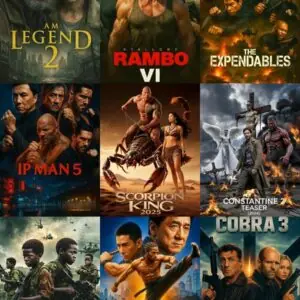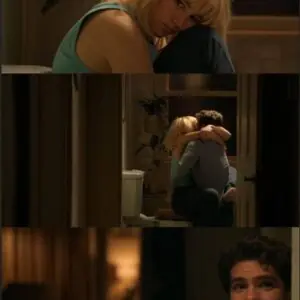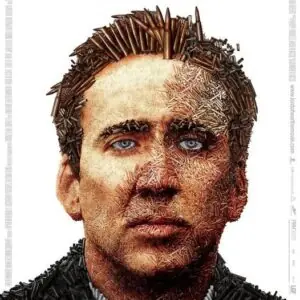Introduction
David Trueba’s Madrid, 1987 (2011) is a deceptively simple film—a two-character drama set almost entirely in a locked bathroom—that unfolds into a profound meditation on aging, political change, and human connection. Starring José Sacristán as Miguel, a cynical, aging journalist, and María Valverde as Ángela, a young journalism student, the film captures a fleeting but intense encounter between two people from different generations in post-Franco Spain.
With its sharp dialogue, stifling setting, and outstanding performances, Madrid, 1987 transforms a seemingly mundane situation into a microcosm of Spain’s cultural and political evolution. This review explores the film’s themes, performances, direction, and historical context, arguing that it is one of the most underrated Spanish films of the 2010s.
Plot and Structure: A Locked Room as a Metaphor

The film begins with Ángela interviewing Miguel, a once-prominent leftist writer whose idealism has faded with age. Their conversation starts professionally but soon turns personal, revealing Miguel’s disillusionment and Ángela’s cautious curiosity. When they retreat to a friend’s apartment to continue talking, an accidental lock-in traps them in the bathroom, forcing them into prolonged, intimate confinement.
What follows is a series of conversations—sometimes humorous, sometimes tense—about politics, sex, literature, and the passage of time. The locked bathroom becomes a metaphor for Spain itself: a confined space where generational tensions, historical memory, and unspoken desires simmer beneath the surface.
Themes: Generational Divides and Political Memory

1. The Weight of the Past
Set in 1987, the film takes place just over a decade after Franco’s death, at a time when Spain was still grappling with its transition to democracy. Miguel, a product of the anti-Franco resistance, embodies the disillusionment of his generation—those who fought for change but now see their ideals eroded by time and compromise.
In contrast, Ángela represents the younger generation, one that did not experience the dictatorship firsthand. Her political awareness is more abstract, shaped by textbooks rather than lived struggle. Their debates reflect Spain’s broader cultural reckoning: How should history be remembered? Who gets to define its legacy?

2. Aging and Desire
Miguel’s aging body becomes a central motif. At one point, he stands naked before Ángela, not in a moment of seduction but of vulnerability. His physical decline mirrors his fading relevance as a writer, and Sacristán’s performance captures both pride and melancholy in this realization.
Ángela, meanwhile, is at the beginning of her life—full of potential but unsure of her direction. Their dynamic shifts between mentorship, flirtation, and confrontation, revealing the complexities of intergenerational relationships.
3. The Illusion of Freedom
Though Spain was politically free by 1987, Trueba suggests that personal and psychological constraints remain. The locked bathroom symbolizes how people—even in a democracy—can still feel trapped by their past, their regrets, or societal expectations.
Performances: Sacristán and Valverde’s Masterful Chemistry
The film rests entirely on the shoulders of its two leads, and both deliver exceptional performances:
-
José Sacristán is magnetic as Miguel, balancing wit, arrogance, and deep-seated vulnerability. His monologues about literature and lost love are delivered with a mix of nostalgia and self-deprecation, making him both frustrating and deeply human.
-
María Valverde brings a quiet intensity to Ángela. She is neither naïve nor jaded, but a young woman navigating her own agency. Her reactions—sometimes amused, sometimes disturbed—add layers to their exchanges.
Their chemistry feels organic, shifting from intellectual sparring to moments of unexpected tenderness.
Direction and Cinematography: Claustrophobia and Intimacy
Trueba’s direction is minimalist yet effective. The film’s confined setting could have felt stagey, but clever camerawork and pacing keep it dynamic. Close-ups emphasize the characters’ facial expressions, while the sparse background—tiles, a bathtub, a small window—reinforces their isolation.
The heat of Madrid’s summer is almost palpable, adding to the suffocating atmosphere. The film’s slow burn mirrors the gradual unraveling of Miguel’s defenses and Ángela’s growing assertiveness.
Historical and Cultural Context: Spain in Transition

To fully appreciate Madrid, 1987, one must understand Spain’s La Movida era—the cultural renaissance that followed Franco’s death. By 1987, the initial euphoria had faded, leaving questions about what came next. Miguel embodies this transition: a man who once fought for freedom but now finds himself irrelevant in a rapidly changing world.
The film subtly critiques how Spain’s past was often glossed over in the rush toward modernization. Miguel’s rants about journalism (“Now it’s all gossip and ads”) reflect broader anxieties about the commercialization of culture.
Criticisms: A Film That Demands Patience
Madrid, 1987 is not for everyone. Its heavy reliance on dialogue may test some viewers’ patience, and the lack of conventional plot might frustrate those expecting dramatic twists. Additionally, some may find Miguel’s occasional condescension toward Ángela uncomfortable, though this is clearly intentional—a reflection of his flawed, human nature.
Conclusion: A Hidden Gem of Spanish Cinema
Madrid, 1987 is a film that lingers. It is a poignant exploration of time’s passage, the scars of history, and the fleeting connections that give life meaning. Trueba’s restrained direction, combined with Sacristán and Valverde’s powerhouse performances, makes it a must-watch for fans of character-driven cinema.
More than just a period piece, Madrid, 1987 speaks to universal truths about aging, regret, and the search for meaning—making it a timeless work of art.
Final Rating: 4.5/5
An intellectually stimulating and emotionally resonant film that proves confinement can lead to the most expansive conversations.





